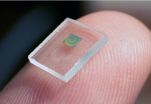(Press-News.org) Scientists from Oregon State University have discovered that fish can produce their own sunscreen. They have copied the method used by fish for potential use in humans.
In the study published in the journal eLife, scientists found that zebrafish are able to produce a chemical called gadusol that protects against UV radiation. They successfully reproduced the method that zebrafish use by expressing the relevant genes in yeast. The findings open the door to large-scale production of gadusol for sunscreen and as an antioxidant in pharmaceuticals.
"The fact that the compound is produced by fish, as well as by other animals including birds, makes it a safe prospect to ingest in pill form," says Professor Taifo Mahmud, lead author of the study.
However, further studies will be needed to test if and how gadusol is absorbed, distributed, and metabolised in the body to check its efficacy and safety.
Gadusol was originally identified in cod roe and has since been discovered in the eyes of the mantis shrimp, sea urchin eggs, sponges, and in the dormant eggs and newly hatched larvae of brine shrimps. It was previously thought that fish can only acquire the chemical through their diet or through a symbiotic relationship with bacteria.
Marine organisms in the upper ocean and on reefs are subject to intense and often unrelenting sunlight. Gadusol and related compounds are of great scientific interest for their ability to protect against DNA damage from UV rays. There is evidence that amphibians, reptiles, and birds can also produce gadusol, while the genetic machinery is lacking in humans and other mammals.
The team were investigating compounds similar to gadusol that are used to treat diabetes and fungal infections. It was believed that the biosynthetic enzyme common to all of them, EEVS, was only present in bacteria. The scientists were surprised to discover that fish and other vertebrates contain similar genes to those that code for EEVS.
Curious about their function in animals, they expressed the zebrafish gene in E. coli and analysis suggested that fish combine EEVS with another protein, whose production may be induced by light, to produce gadusol. To check that this combination is really sufficient, the scientists transferred the genes to yeast and set them to work to see what they would create. This confirmed the production of gadusol. Its successful production in yeast provides a viable route to commercialisation.
As well as providing UV protection, gadusol may also play a role in stress responses, in embryonic development, and as an antioxidant.
"In the future it may be possible to use yeast to produce large quantities of this natural compound for sunscreen pills and lotions, as well as for other cosmetics sold at your local supermarket or pharmacy," says Professor Mahmud.
INFORMATION:
Reference
The paper 'De novo synthesis of a sunscreen compound in vertebrates' can be openly accessed online at http://dx.doi.org/10.7554/eLife.05919. Contents, including text, figures, and data, are free to re-use under a CC BY 4.0 license.
An eLife Insight, 'Shedding light on sunscreen biosynthesis in zebrafish,' by Carolyn A. Brotherton and Emily P. Balskus, is available at http://dx.doi.org/10.7554/eLife.07961
Media contact
Jennifer Mitchell, eLife
j.mitchell@elifesciences.org
+44 (0) 1223 855 373
About eLife
eLife is a unique collaboration between the funders and practitioners of research to improve the way important research is selected, presented, and shared. eLife publishes outstanding works across the life sciences and biomedicine -- from basic biological research to applied, translational, and clinical studies. eLife is supported by the Howard Hughes Medical Institute, the Max Planck Society, and the Wellcome Trust. Learn more at elifesciences.org.
Extremely high levels of cardiovascular risk factors have been found in people with established psychosis, with central obesity evident in over 80 per cent of participants, in a study by researchers from the NIHR Biomedical Research Centre at the South London and Maudsley NHS Foundation Trust (SLaM) and King's College London.
In the largest study of its kind in the UK, drawing on a sample of more than 400 outpatients with psychosis, it was discovered that nearly half of the sample were obese (48 per cent), with a body mass index (BMI) of 30 or more. Additionally, nearly ...
Around 55 million years ago, an abrupt global warming event triggered a highly corrosive deep-water current to flow through the North Atlantic Ocean. The origin of this corrosive water has puzzled scientists for a decade.
Now, researchers have discovered this current and how it formed. The findings, published today in Nature Geoscience, also have profound implications for the sensitivity of our current climate to carbon dioxide emissions.
The researchers explored the acidification of the ocean that occurred during a period known as the Paleocene Eocene Thermal Maximum ...
A low platelet count can occur as the result of a variety of medical conditions and as a medication side effect. Platelet transfusion is often required for individuals with a critically low platelet level. Currently, the primary source of platelets is volunteer donors. Unfortunately, donated platelets have an extremely short shelf life and can be in limited supply. A new study in the Journal of Clinical Investigation reports on a method to generate progenitor cells from murine embryonic stems that are able to produce a large number of functional platelets. Mitchell Weiss ...
Bacterial meningitis is a life-threating infection of the central nervous system. Group B Streptococcus (GBS) is the leading cause of meningitis in newborn babies and can cause severe complications in those that survive the infection. GBS must cross the blood-brain-barrier (BBB) to cause disease but it is not clear how these organisms breach this barrier. A new study in the Journal of Clinical Investigation identifies a pathway that is induced by GBS and disrupts junctions between cells. Kelly Doran and colleagues at San Diego State University determined that GBS induces ...
PROSSER, Wash. - Washington wine grape vineyards experimenting with sustainable pest management systems are seeing an unexpected benefit: an increase in butterflies.
Over the years, loss in natural habitat has seen the decline in numbers of around 50 species of butterflies in eastern Washington. But in a recent Washington State University study published in the June issue of the Journal of Insect Conservation, researchers found that vineyards that create nearby natural habitats have three times the number of butterfly species and four times more butterflies than conventional ...
In what marks a significant step forward for artificial intelligence, researchers at UC Santa Barbara have demonstrated the functionality of a simple artificial neural circuit. For the first time, a circuit of about 100 artificial synapses was proved to perform a simple version of a typical human task: image classification.
"It's a small, but important step," said Dmitri Strukov, a professor of electrical and computer engineering. With time and further progress, the circuitry may eventually be expanded and scaled to approach something like the human brain's, which has ...
TORONTO (May 11, 2015) -- Immigrants from the Caribbean and Bermuda, as well as refugees from East Africa and South Asia, have a 1.5 to 2 times higher risk of psychotic disorders compared to the general population of Ontario, Canada, according to a new study by researchers at the Institute for Clinical Evaluative Sciences (ICES) and the Centre for Addiction and Mental Health (CAMH). The study also found that immigrants from Northern Europe, Southern Europe and East Asia had about half the risk of psychotic disorders compared to the general population.
The study published ...
By combining 3D holographic lithography and 2D photolithography, researchers from the University of Illinois at Urbana-Champaign have demonstrated a high-performance 3D microbattery suitable for large-scale on-chip integration with microelectronic devices.
"This 3D microbattery has exceptional performance and scalability, and we think it will be of importance for many applications," explained Paul Braun, a professor of materials science and engineering at Illinois. "Micro-scale devices typically utilize power supplied off-chip because of difficulties in miniaturizing ...
U.S. Congress approval ratings are at record lows. Now a new study suggests that this may be partly due to a decline in the use of warm, agreeable language in the House.
The study, co-authored by University of British Columbia business professor Karl Aquino, found that the use of prosocial words -- language such as cooperate or contribute -- by lawmakers predicts public approval of Congress six months later.
"If members of Congress want to be viewed more positively by the public, it appears that the words they use matter," says Aquino, a marketing and behavioural science ...
Researchers report that as the world population increases and food demand has grown, globalization of trade has made the food supply more sensitive to environmental and market fluctuations. This leads to greater chances of food crises, particularly in nations where land and water resources are scarce and therefore food security strongly relies on imports.
The study assesses the food supply available to more than 140 nations (with populations greater than 1 million) and demonstrates that food security is becoming increasingly susceptible to perturbations in demographic ...



